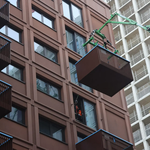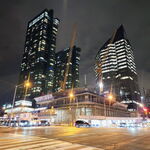dowlingm
Senior Member
Wonder how easy it is to create hydrogen fuelling infrastructure that works to equivalent safety with diesel in Toronto’s temperature range.

Of possible interest: in November New Jersey Transit exercised an option for 17 Bombardier ALP-45DP electric-diesel locomotives. If GO ends up buying them to support initial electrification efforts (and/or keeping them for the same reason NJT uses them - to operate sections of diesel service over mostly electric lines) then there is a larger pool of existing models for Bombardier to maintain a decent spares line.
The RTM CEO has announced that they will get rid of all of their 20 ALP-45DP's (and replace them with "low GHG emitting diesel locomotives") once the REM enters service.
I wonder if GO will be interested to buy them from Montreal at a bargain.
its a real shame that our country's heavy rail system is still run by the oil barons.Ah, that's a little disappointing, that the RTM has given up on electrifying. Without the Deux Montagnes line and the Mount Royal tunnel, the entire system will be Diesel.
This is not a great take. The issue is that the heavy rail system is run by CN and CP who don't want to operate under the compromises 25kV catenary would impose.its a real shame that our country's heavy rail system is still run by the oil barons.
I'm waiting for the day where via and other large systems use all electric.
This is not a great take. The issue is that the heavy rail system is run by CN and CP who don't want to operate under the compromises 25kV catenary would impose.
While GO would be a logical destination for dual modes, AMT would be able to interest NJT in the ALP45s *and* NJT-sized Bombardier Multilevels as a package - install ACSES, PTC and do some other tweaking and you're ready to roll. The CRRC cars and maybe some of the BBD fleet would remain for the diesel haul remnant RTM services to Gare Centrale.
Lots of freight can be hauled under catenary but some loads - autoracks in particular - have trouble staying under maximum clearance.All the more reason to get dedicated track where possible. Then again is it feasible for freight yo be electric as well if money wasn't an issue. I would imagine electric locos could still work on freight
Lots of freight can be hauled under catenary but some loads - autoracks in particular - have trouble staying under maximum clearance.
For clarity, I was referring to the expansion of electrification to freight routes generally, and the clearances that exist on those at present. As for the structures, it would be interesting to know how electric freight roads in Europe quantify structure impact risk - maybe they maintain their track and rolling stock more aggressively to minimise derailment?The issue is not really staying under the maximum clearance envelope. They run autoracks and other Plate C+ cars, and very rarely doublestacks, under the catenary of the North East Corridor. Part of the electrification EA process has been identifying locations where the clearance has been lacking, and what avenues there are to get around it. So long as it's known ahead of time, it's really not a big deal.
The bigger concern is what will happen if it all goes pear-shaped. It's much trickier to clean up a derailment with all of the structures around.
Dan
Toronto, Ont.
For clarity, I was referring to the expansion of electrification to freight routes generally, and the clearances that exist on those at present.
As for the structures, it would be interesting to know how electric freight roads in Europe quantify structure impact risk - maybe they maintain their track and rolling stock more aggressively to minimise derailment?
I realize this is largely a corridor topic, but I would think the prospect of electrifying almost 31,000 miles of trackage plus all the industrial and customer spurs would be a tad daunting for the railroads. If only some was done, then it would require the carriers to expand their fleets and interchange facilities.




